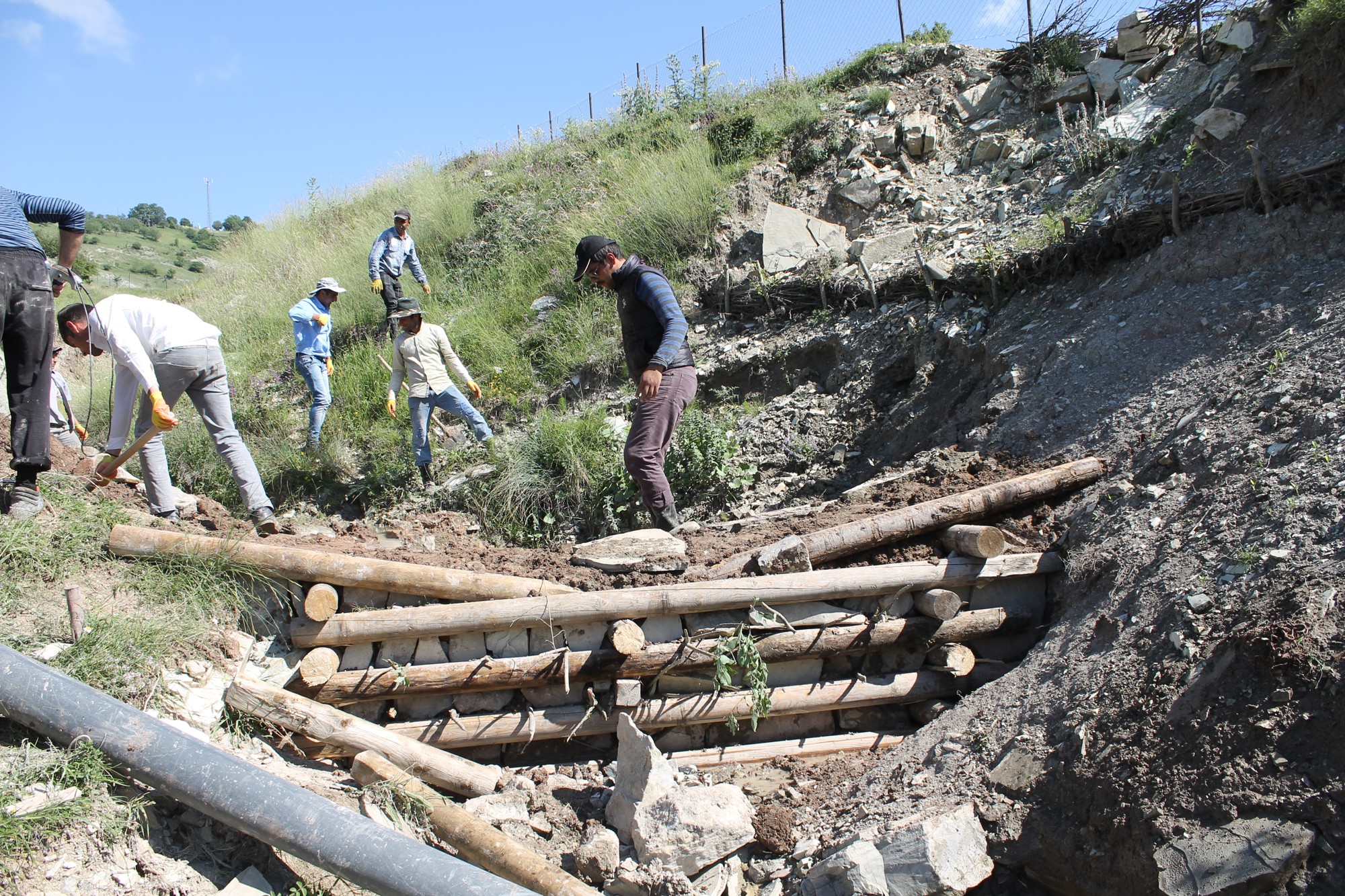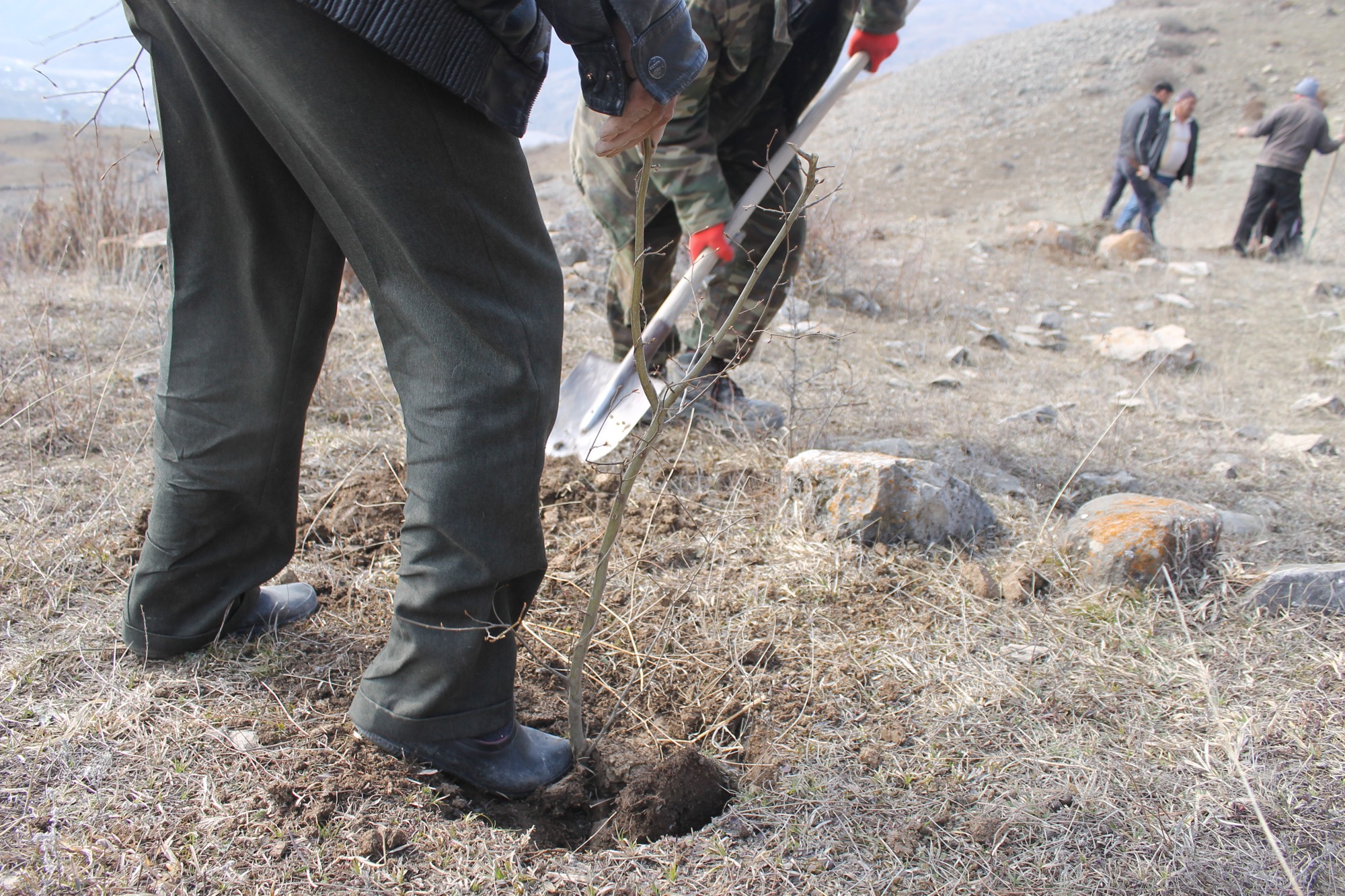


Implemented erosion control measures contribute to the conservation of biodiversity through the protection of natural resources from anthropogenic induced erosion processes and through the rehabilitation of degraded areas. Special attention is paid to the causes and underlying drivers of erosion in order to develop strategies to improve erosion control at local level. Together with national partners Ismayilli district of Azerbaijan was selected as a pilot region.
Different erosion control measures are conceptualized and implemented through the cooperation of national and local partners, involving relevant stakeholders, international and local experts and local villagers. In order to rehabilitate the eroded lands and avoid further land degradation locally applicable erosion control measures are introduced to the land users. Measures include ‘grey’ measures (terraces, fences) as well as ‘green’ measures (afforestation, orchard management) and are combined with alternative income generating practices.
Socio-economic and ecological benefits of better land management and erosion control measures are monitored, documented and demonstrated to surrounding communities.
- Understanding and ownership of the problems by land users are an essential part of successful implementation of erosion control.
- Strong exchange between land user and relevant scientist.
- Capacity development for land users.
- Demonstrate economic value of erosion control measures.
- A strong understanding of the social structure of the community as well as the local environment is key for the development of an erosion control concept.
- Measures should be locally applicable and tangible for the farmers.
- Reliable results are necessary to convince farmers (shown on the pilot sites and monitoring plots of the project).
- It is vital to test and demonstrate different erosion control measures to showcase what measures have the most impact on which erosion situations and foster understanding for the solutions.
- Involvement of local communities in the construction of the measures (manpower and material).
- Develop an upscaling concept, making local experiences sustainable, e.g. an erosion control handbook for the South Caucasus region.